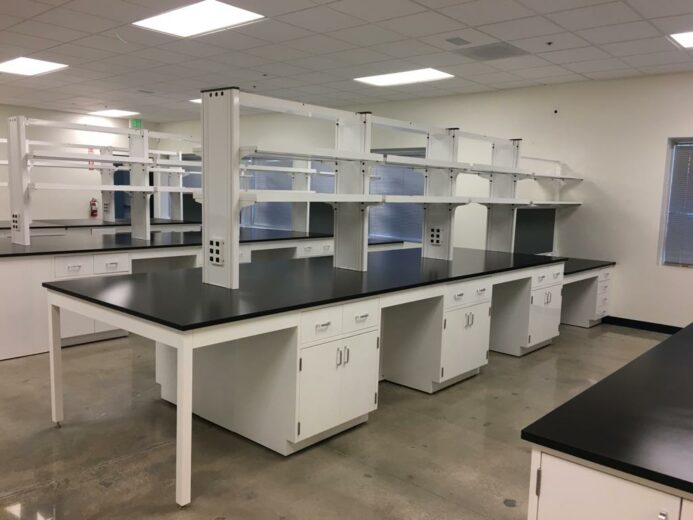A laboratory is not complete without lab tables. In fact, they personify a science lab — because experiments and demonstrations are carried out on top of these tables. Lab tables are an integral part of any lab.
But truth be told, you can’t afford to buy lab tables without first understanding their purpose, the problems they solve in a science lab, and why you need them.
Each science lab is unique and designed to accommodate specific furniture, equipment, and chemical supplies. If you’re in the market for a lab table, these are the 3 most important questions to ask yourself.
- Is the table’s surface durable?
- What material is it made of?
- Does it have the right features? (storage drawers, power outlets, sinks, etc.)
We know that buying a lab table can be tricky, that’s why we’ve created this brief guide to steer you in the right direction. It will help you to make an informed buying decision. So, let’s get right to it.
How Do You Tell If a Lab Table Is Durable?
We’ll be very honest with you, there’s no way you can determine the durability of a lab table just by looking at it. The tell-tale sign of durability is the material. If the material is indicated, do a little research and determine if it meets your needs. For instance, high-pressure laminate is the go-to material for student science tables while ChemGuard is used for science workstations.
What Types of Materials Are Used to Make Science Lab Tables?
There are many types because lab tables need materials that withstand wear and tear, heat, and extreme reactions. These are the most common lab table materials.
- High-Pressure Laminate: Ideal for student science tables and workstations that are devoid of chemicals as it is not resistant to chemicals.
- Epoxy Resin: The best of all lab table materials, epoxy resin does not experience delamination or swelling (because of its monolithic composition). It is highly resistant to heat and normal laboratory chemicals.
- Phenolic Resin: This is a water-resistant material that doesn’t etch or scratch when exposed to most solvents and chemicals. It is used to create reagent racks, pegboards, and countertops.
- Solid Epoxy Resin: Just like Phenolic resin, this material is impervious to common laboratory chemicals and moisture. Solid epoxy resin is formulated from altered epoxy resins. It is highly durable and oven cured.
- ChemGuard: Tests have proven that this material has excellent chemical resistance and better NEMA wear value compared to other laminates. It can be used with both heat and chemical experiments.
- Wielded Fiber: This material is resistant to harmful contaminants and chemicals. And thanks to its slightly textured surface, it is more scratch-resistant than standard ChemGuard laminate.
What Features Should Science Lab Tables Have?
Regular lab tables have sinks, storage drawers, whiteboards, power outlets, and solid legs. However, some lab tables boast special features like adjustable height, wheels, and demonstration mirrors. But these features are not necessary, so don’t feel shortchanged if your science lab table doesn’t have them.
The Takeaway
Lab tables are made to last, which is why you should buy the best. Look at the material (to determine the durability) and consider the features. Additionally, think of its purpose. That way, you’ll make an informed buying decision and get a lab table that fits your needs.
